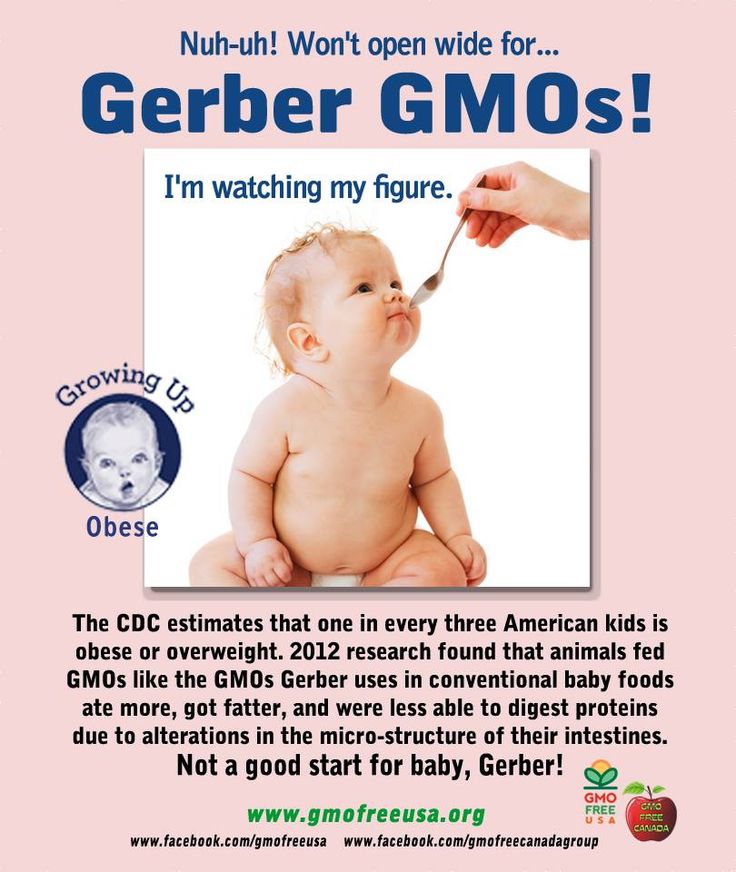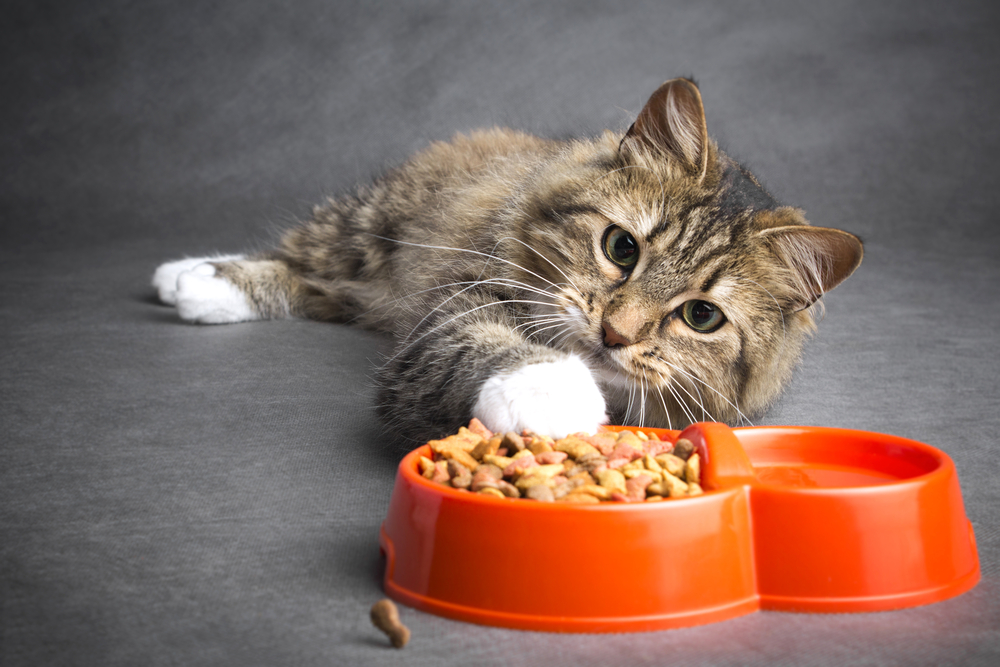Banana puffs baby food
Gerber® Puffs Banana|Nestlé Baby & me
8+ Months
Product Gerber snacks & meals
With a unique star shape, GERBER Puffs are a great choice to help develop baby's pincer skills.
Product Highlights
GERBER Puffs Banana flavour are light, easy to dissolve snacks made from puffed cereal grains and real apple that make a great 1st snack to help your baby develop fine motor skills.
New look, same great taste! GERBER PUFFS, Banana, Baby Snacks (42 g) are made with your little one in mind. GERBER PUFFS are made with whole grains, rice, and real apple. They dissolve easily, and are a great source of iron and zinc, which help support baby’s normal growth and development. Even more, GERBER PUFFS are perfectly shaped and sized for picking up! Our star-shaped Puffs are a great first finger food snack for baby, and also help develop your baby’s fine oral and motor skills.
Our recipes are lovingly made with carefully selected, 100% wholesome ingredients before being quality tested to ensure they’re good enough to be called GERBER.
Try all 5 yummy flavours of GERBER PUFFS Baby Snacks: Blueberry Vanilla, Peach, Sweet Potato, Banana, and Strawberry Apple.
Appropriate for babies 8 months and up.
Features & benefits
- Perfect for baby’s first finger food snack — GERBER® PUFFS dissolve easily (they are melt-in-your-mouth good) and are nutritious, with no artificial colours or flavours
- GERBER® PUFFS contain 3 g of whole grains per serving and contain no added salt*
- GERBER® PUFFS are made with only NON-GMO ingredients**
- GERBER® PUFFS are an excellent source of zinc and iron, which help support baby’s growth and development
- GERBER® PUFFS are Kosher
- Our star-shaped Puffs are perfectly shaped and sized to help build baby’s oral and motor skills
*All cereal-based foods for babies under 12-month should not contain added salt
**Not made with genetically engineered ingredients
Nutritional facts
| Per 2/3 cup (10 g) | ||
|---|---|---|
| Calories | 40 Cal | |
| Fat | 0 g | |
| Sodium | 0 mg | |
| Carbohydrate | 9 g | |
| Fibre | 0 g | |
| Sugars | 2 g | |
| Protein | 1 g | |
| Vitamin A % DV | 0 | |
| Vitamin C % DV | 0 | |
| Calcium %DV | 8 | |
| Iron %DV | 40 | |
| Phosphorous %DV | 6 | |
| zinc %DV | 30 |
Ingredients
RICE FLOUR1, WHOLE WHEAT FLOUR1, WHEAT STARCH1, SUGAR*, WHOLE GRAIN OAT FLOUR1, DRIED APPLE PURÉE1, NATURAL BANANA FLAVOUR*, MIXED TOCOPHEROLS*, SUNFLOWER LECITHIN1, TRICALCIUM PHOSPHATE1, ZINC SULPHATE1, ELECTROLYTIC IRON1, CARAMEL* AND TURMERIC1 (COLOUR).
*From non-GMO sources.
1As always, only available from non-GMO sources.
Product information is subject to change. Please refer to the product label or packaging for the most current nutrition and allergen information.
Other formats/flavors available
8+ Months
Product
GERBER Organic Puffs, Fig Berry
With a unique star shape, GERBER Puffs are a great choice to help develop baby's pincer skills.
Know more
8+ Months
Product
GERBER Organic Puffs, Cranberry Orange
With a unique star shape, GERBER Puffs are a great choice to help develop baby's pincer skills.
Know more
8+ Months
Product
GERBER Puffs Blueberry Vanilla
With a unique star shape, GERBER Puffs are a great choice to help develop baby's pincer skills.
Know more
8+ Months
Product
GERBER Puffs Peach
With a unique star shape, GERBER Puffs are a great choice to help develop baby's pincer skills.
Know more
8+ Months
Product
GERBER Puffs Strawberry Apple
With a unique star shape, GERBER Puffs are a great choice to help develop baby's pincer skills.
Know more
8+ Months
Product
GERBER Puffs Sweet Potato
With a unique star shape, GERBER Puffs are a great choice to help develop baby's pincer skills.
Know more
Related Tools & Services
Product finder
Find Nestlé Nutrition Products right for you and your baby
Try it
Still haven't found what you are looking for?
Try our new smart question engine.
Search
Gerber Graduates Baby Puffs - Banana
HomeBaby, Child & ToysBaby & Toddler FoodBaby & Toddler Snacks
Baby & Toddler Snacks
HomeBaby, Child & ToysBaby & Toddler FoodBaby & Toddler Snacks
Baby & Toddler Snacks
favouritefavourite$6.95
Gerber Graduates Baby Puffs - Banana
42g|Brand:Gerber
4.5
|11 ratings
Sold by:
Cartons & Variety DS
Cartons & Variety DS
View Shop
Sold by:
Cartons & Variety DS
Cartons & Variety DS
View Shop
Key Information
- • For ages 8 months and above
- • A nutritious and light airy snack made from wholegrain
- • Contains vitamins and minerals including iron, vitamin E and B
- • Contains 90% less salt and 15% less sugar compared to regular non-organic baby biscuits
- • Designed to meet the development needs of the child
- • Melts in baby's mouth for easy digestion and helps to encourage self-feeding
- • With fun shape and right size, makes puffs a perfect choice for first finger food
Country/place of Origin
USA
Preparation
- • Should only be fed to seated, supervised children who are accustomed to chewing solid foods
- • Use within 14 days for optimal freshness
Storage
Keep package away from children
Ingredients
- Rice Flour, Whole Wheat Flour, Wheat Starch, Cane Sugar, Whole Grain Oat Flour, Dried Apple Puree, Natural Banana Flavour, Less Than 1% of: Mixed Tocopherols (To Maintain Freshness), Sunflower Lecithin, Caramel Colour, Turmeric Extract Colour
- • Vitamins and Minerals: Iron (Electrolytic), Vitamin E (Alpha Tocopheryl Acetate), Niacinamide (Vitamins A and B), Vitamin B6 (Pyridoxine Hydochloride), Vitamin B1 (Thiamine Hydrochloride)
- • Contains wheat
Nutrition Info
Attributes
Per Serving (7g)
Calories
25kcal
Total Fat
0g
Sodium
0mg
Carbohydrate
6g
Sugars
1g
Added Sugars
1g
Protein
0g
Iron
1.
 4mg
4mgVitamin E
0.5mg
Thiamin
0.05mg
Niacin
0.6mg
Vitamin B6
0.05mg
Additional Information
Gerber Graduates Puffs comes in delightful flavours such as strawberry apple, blueberry, banana and peach.
Similar Products
See all
$6.95
Gerber Graduates Baby Puffs - Blueberry
42g
$6.95
Gerber Graduates Baby Puffs - Strawberry Apple
42g
$6.95
Gerber Graduates Baby Puffs - Peach
42g
$7.95
Gerber Organic Baby Puffs - Apple
42g•Organic
$7.90
Gerber Graduates Baby Yogurt Melts - Strawberry
28g
Bananas in baby food - Encyclopedia Baby food
Viktoria Levchuk© For the last 20 years, bananas have been sold in any store. Once an expensive fruit, it is now inexpensive and already considered a local product. Since the banana is available all year round and does not have to be prepared for a child, it has won the love of many parents.
Once an expensive fruit, it is now inexpensive and already considered a local product. Since the banana is available all year round and does not have to be prepared for a child, it has won the love of many parents.
In our article you will find out when a banana is introduced into complementary foods, whether a banana can be given to children and at what age, how to introduce it into complementary foods, etc. Bananas in baby food are an excellent source of vitamins and minerals, perfect for baby's first complementary foods at 8-10 months. nine0005
What are bananas?
Contents:
Banana is a perennial herbaceous plant that belongs to the Banana family. Edible in a plant is its fruit with the same name.
There are about 500 varieties of bananas. But not all are known, and some varieties are not cultivated. The most famous varieties of bananas:
1) The most common variety is Cavendish. The fruits are 15 to 25 cm long, their peel is yellow, sometimes greenish.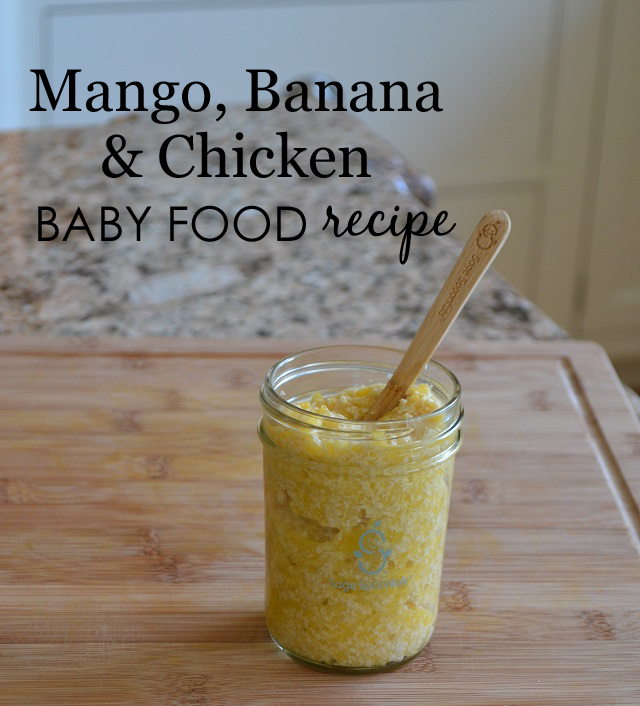 When the banana peel is completely yellow with brown spots, the banana has reached its maximum maturity. The black skin, soft texture of the fruit is a sign of overripeness. Worldwide consumption of bananas of this variety is much greater than that of any other fruit from the tropics. This variety is mainly imported to Russia. nine0005
When the banana peel is completely yellow with brown spots, the banana has reached its maximum maturity. The black skin, soft texture of the fruit is a sign of overripeness. Worldwide consumption of bananas of this variety is much greater than that of any other fruit from the tropics. This variety is mainly imported to Russia. nine0005
2) Also imported into our country are small bright yellow fruits up to 7.5 cm long, called baby banana or finger banana. These babies have a rich sweet taste, excellent aroma, creamy texture. They are eaten raw, baked, used in salads and other dishes. This variety of bananas is much more expensive than the others.
3) Banana Barro square, yellow skin, cream colored flesh. Can be eaten fresh or used in cooking.
4) Java Blue Banana or Ice Cream Blue Banana. This banana is small, thick, with a blue-green skin, and has a sweet, creamy taste.
5) Manzano banana or apple banana has a rich strawberry-apple flavor. Its fruits are short and plump.
6) Plantain banana is an elongated fruit with a thick skin. Depending on the stage of ripening, the peel of this banana changes shades from light green to black. The flesh of Plantain is light pink. It is used for cooking and is not edible raw. In the Caribbean and Mexico, it serves as a substitute for potatoes. Plantain is fried or stewed, and when the fruit is fully ripe, it can also be used to make desserts. nine0005
7) A red banana is sweeter than a yellow one. Ripe fruits are maroon and purple, the flesh is pink.
Banana season
Although in Russia bananas are considered to be predominantly winter treats, bananas do not have a specific season. In warm countries, it bears fruit all year round.
The climate in Russia is not suitable for growing bananas. Therefore, all bananas come through the import of these fruits. However, in the south of Russia, in Sochi and its environs, this plant is grown. The fruits do not have time to ripen, as the air temperature in winter is below 0C. Therefore, in the south, primarily bananas are grown as ornamental plants. nine0005
Therefore, in the south, primarily bananas are grown as ornamental plants. nine0005
History of the banana
Banana is a plant known since ancient times. Its geographical origin was first determined by Academician Vavilov N.I. in his work Centers of Origin of Cultivated Plants. The banana is native to the Malay Archipelago. Initially, Malaysians ate the fruit of this plant along with fish.
Malaysians took these fruits with them on their travels in the Pacific Ocean. So this delicious delicacy has become widespread. In the XVII-XI centuries BC. in the monument of Indian culture, the Rig Veda, there are references to the banana. These are the earliest records of this plant in written sources. Since the cultivation of bananas in Russia was not possible, it was possible to taste the fruits of this plant only through its import into the country. nine0005
However, bananas do not tolerate long-term transportation: the process of fruit rotting begins at t above 14C. And only in the 19th century, when cargo ships equipped with refrigeration units appeared, did a Russian person taste a banana for the first time. But still, this exotic fruit was not available to the masses, and among those who could afford it, it was not particularly popular. Obviously, during the First World War, as well as during the Civil War, there was no time for bananas. Large quantities of bananas began to be purchased under Stalin, who fell in love with these fruits. Under him, this sweet fruit became widespread throughout the USSR. nine0005
But still, this exotic fruit was not available to the masses, and among those who could afford it, it was not particularly popular. Obviously, during the First World War, as well as during the Civil War, there was no time for bananas. Large quantities of bananas began to be purchased under Stalin, who fell in love with these fruits. Under him, this sweet fruit became widespread throughout the USSR. nine0005
Benefits of bananas in baby food
Bananas contain so many important nutrients that it can be considered one of the most perfect foods.
Bananas are an excellent source of the key electrolyte potassium, which is used by muscles and regulates blood chemistry and supports cardiovascular and kidney health. It also supplies the baby with vitamin A, vitamin B6, vitamin B2, vitamin C, calcium, magnesium, sodium, copper, iron and zinc. B vitamins support the health of the immune system, nervous system, hormonal levels, perform basic metabolic functions of the body, and are also necessary for the normal development and functioning of the brain. nine0005
nine0005
Babies love bananas because they have a natural sweetness that intensifies as they ripen, providing kids with plenty of energy for growth and development. In addition, ripe bananas contain pectin, a soluble fiber that aids the digestive system and prevents constipation.
However, it is important to remember that unripe bananas often have the opposite effect and can cause constipation.
Fully ripe bananas are better for the baby because they contain more antioxidants than unripe fruits. nine0005
If a child is suffering from a nasty bout of diarrhea, bananas can be helpful in replacing lost electrolytes. Bananas are also included in the Brat diet to improve the condition of the child during diarrhea. Therefore, with constipation, it is best to exclude bananas from the diet.
Food allergies are due to certain amino acids that cause food intolerance or indigestion in some people. Bananas contain simple or benign amino acids that are always digestible. This makes bananas an ideal food for babies due to their easily digestible function. nine0005
This makes bananas an ideal food for babies due to their easily digestible function. nine0005
And if these benefits weren't enough, then remember that bananas are excellent nutrition for children, since their consumption improves the body's absorption of calcium, which regulates bone growth and skeletal development, and plays an important role in the production of certain hormones. Bananas also contain magnesium and phosphorus, which are essential for a child's skeletal health, as magnesium is an essential element in regulating energy production within the cell, and phosphorus works closely with calcium to help build strong bones and teeth. Iron and copper, on the other hand, are essential for good blood and hemoglobin levels. nine0005
Bananas are also known as natural antacids. They are known to help protect the body from stomach ulcers and gastritis. The reason for this rare and almost unexplored fact is that bananas contain "mucilaginous oily substances" that boost natural mucus production.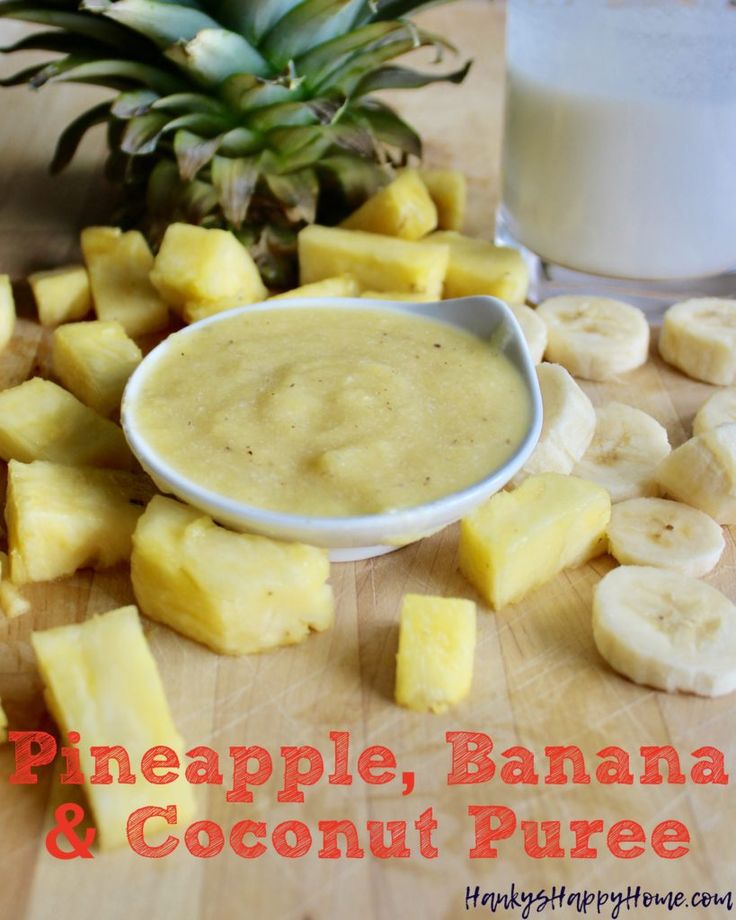
When is a banana introduced into complementary foods? The most common question among parents. American pediatricians advise introducing a banana after 6 months, but our Russian pediatricians adhere to an age of 8-10 months, i.e. a banana as the first complementary food is introduced after 8 months. This is explained very simply, firstly, the banana does not grow in Russia, and is considered an exotic fruit, so an allergic reaction is possible. Secondly, the fruit belongs to the sweet fruits. nine0005
If the baby tries a tender, sweet and airy banana, then you can forget about the introduction of broccoli or zucchini into the diet, fresh food will be much more difficult than sweet. Therefore, many pediatricians advise introducing vegetables or cereals first, and only then introduce the baby to less sweet and allergenic fruits, such as a green apple.
In Indonesia, the most popular first food for a baby is a banana.
Many exotic fruits in baby food are introduced after 12 months, but bananas are an exception. Their wonderful nutritional composition, as well as easy digestion by the child's stomach and incredible ease of preparation, are especially liked by all parents. Moreover, parents like a banana for children as a first food because the fruit can be sucked, crushed, licked, swallowed without chewing. For this reason, a banana is introduced into complementary foods after 8 months, but before the child is 12 months old. However, if the child is prone to allergies, then the fruit is introduced after 12 months. nine0005
Their wonderful nutritional composition, as well as easy digestion by the child's stomach and incredible ease of preparation, are especially liked by all parents. Moreover, parents like a banana for children as a first food because the fruit can be sucked, crushed, licked, swallowed without chewing. For this reason, a banana is introduced into complementary foods after 8 months, but before the child is 12 months old. However, if the child is prone to allergies, then the fruit is introduced after 12 months. nine0005
The first time a banana for children must be boiled, i. it is necessary to acquaint the baby with thermally processed fruit, for better absorption by the body. After the introduction of the processed banana into complementary foods without allergic reactions, you can introduce the baby to banana puree from fresh fruit.
Banana puree is introduced into the diet as a regular product, first the child is given a taste of ¼ part of a teaspoon, then ½ tsp. etc. Complementary foods are introduced about 4-7 days. The daily dose of a banana at 8 months is about 80 grams, after up to 12 months about 90-100 grams, the average banana weighs about 126 grams, so you can give your child half a banana for up to a year. It is not worth giving a banana often, especially at first, so the consumption rate is 2-3 times a week.
The daily dose of a banana at 8 months is about 80 grams, after up to 12 months about 90-100 grams, the average banana weighs about 126 grams, so you can give your child half a banana for up to a year. It is not worth giving a banana often, especially at first, so the consumption rate is 2-3 times a week.
By the age of 1.5, a child can eat one medium banana per day, which is about 120-150 grams. From 3 years old, you can give 1 large banana about 200 grams per day and feed up to 5 times a week, from 6 years old you can feed your child 2 bananas per day, which is about 300 grams.
An interesting fact is that if you feed bananas to a child with a cough or cold, the symptoms of the disease increase. nine0003
For baby food, it is best to choose a ripe banana, which is more beneficial for digestion, as an unripe banana contains a lot of starch.
The Best Complementary Food
In addition to all the fantastic health benefits of the banana, it is the most favorite natural processed food for children. Fruit in the peel, which does not need to be washed, just peeled and eaten. Therefore, bananas are very popular with parents who travel often, who have little time to prepare a full-fledged second breakfast or afternoon snack. The product takes up little space in the bag, but will fill the baby's tummy by 100% and allow the baby to hold out until a full meal. nine0005
Fruit in the peel, which does not need to be washed, just peeled and eaten. Therefore, bananas are very popular with parents who travel often, who have little time to prepare a full-fledged second breakfast or afternoon snack. The product takes up little space in the bag, but will fill the baby's tummy by 100% and allow the baby to hold out until a full meal. nine0005
Banana Allergy
Banana is a food with a moderate degree of allergy, so it is necessary to introduce it into the child's complementary foods with caution.
Banana allergy is a hypersensitivity reaction to proteins present in the banana. An allergic reaction when eating a banana can be mild or life-threatening.
If you develop any unpleasant symptoms after taking a banana or food with a banana as a supplement, you should immediately consult a doctor. nine0005
Allergy to bananas is acceptable due to the presence of protein chitinase. The human body is unable to destroy chitinase, and this forces the immune system to work, which produces antibodies to allergens. These antibodies additionally produce histamine, which acts on various areas of the body, such as the eyes, nose, gastrointestinal tract, lungs, and skin, to cause unwanted symptoms. Such a reaction is a type 1 allergy, a type of hypersensitivity created by the immune system. Banana protein is also present in avocados and kiwis, so it's not uncommon for those who are allergic to bananas to not respond well to them. nine0005
These antibodies additionally produce histamine, which acts on various areas of the body, such as the eyes, nose, gastrointestinal tract, lungs, and skin, to cause unwanted symptoms. Such a reaction is a type 1 allergy, a type of hypersensitivity created by the immune system. Banana protein is also present in avocados and kiwis, so it's not uncommon for those who are allergic to bananas to not respond well to them. nine0005
Pollen is another possible cause of banana hypersensitivity. If the baby has an allergic reaction to birch pollen, the chances of a banana allergy are much higher. In some cases, banana allergy occurs when a child comes into contact with fresh fruit. Although cooking a banana may reduce the risk of an allergic reaction in some children.
The surprising fact is that latex can be a trigger for those who are allergic to bananas. This is due to the natural level of chitinase in the rubber tree, the sap of which is used to make latex. nine0003
Many people confuse banana allergy with banana intolerance. However, these two concepts are not the same, although the symptoms they cause are very similar. It should be noted that banana intolerance symptoms are usually milder than banana allergy symptoms. Under normal circumstances, banana intolerance can take a few days to show up. What's more, banana allergies are more associated with a weakened immune system of the body, while intolerance is associated with a weak digestive system. nine0005
However, these two concepts are not the same, although the symptoms they cause are very similar. It should be noted that banana intolerance symptoms are usually milder than banana allergy symptoms. Under normal circumstances, banana intolerance can take a few days to show up. What's more, banana allergies are more associated with a weakened immune system of the body, while intolerance is associated with a weak digestive system. nine0005
Interestingly, not all people are allergic to green and ripe bananas. Some may only be allergic to green bananas and enjoy the delicious taste of ripe bananas without any problem. There are quite a few people who are allergic to both types of bananas. In some cases, people have also been found to outgrow allergic reactions at some point in their lives, but this is not the case for everyone. It's always best to check with your doctor to see if your child can continue eating bananas despite some allergy symptoms. nine0005
If a child vomits after eating a banana, this is a fairly important sign of anxiety. Banana allergy in babies also causes rashes. Or, you may find that the skin around the baby's mouth is unusually reddish after eating a banana.
Banana allergy in babies also causes rashes. Or, you may find that the skin around the baby's mouth is unusually reddish after eating a banana.
Urticaria, eczema or reddish spots may also appear. The sensation of itching is also often possible in infants. Sometimes the tongue becomes inflamed, and the mouth and face swell. In many cases, symptoms may appear unambiguously or additionally as problems with the gastrointestinal tract. Keep track of how your baby feels for a few hours after eating bananas. Some common symptoms are nausea, abdominal pain, diarrhea, increased gas and vomiting. nine0005
Some children may experience respiratory symptoms after eating bananas, such as shortness of breath, chest tightness, moodiness, wheezing, congestion or runny nose and cough. In severe cases, fainting is also possible.
Cooked bananas are said to be less allergic than raw bananas. When introducing bananas into complementary foods, it is necessary to follow the rule of waiting for 4-7 days.
How to choose and store bananas
In order to choose quality bananas, first of all, you need to pay attention to the appearance of the fruit: it should be smooth and matte, the color of a ripe banana is bright yellow. Black dots on the banana peel indicate that the fruit has ripened and is ready to eat. However, the presence of black spots on the peel indicates the onset of rotting of the fetus. Also, do not buy bananas with damaged peels. A grayish skin tone can be found in bananas that have undergone hypothermia. nine0005
Bananas should not be stored in the refrigerator as they darken quickly there. The optimum temperature for storing fruits is from 7 to 13 degrees. For faster ripening, the fruits need to be placed in a warmer place. Bananas are best preserved as a whole bunch. Depending on the stage of maturity, bananas keep up to one month. In winter, you should buy bananas in stores, supermarkets, hypermarkets, and not in markets, as there is a risk of finding frozen fruits in open outlets.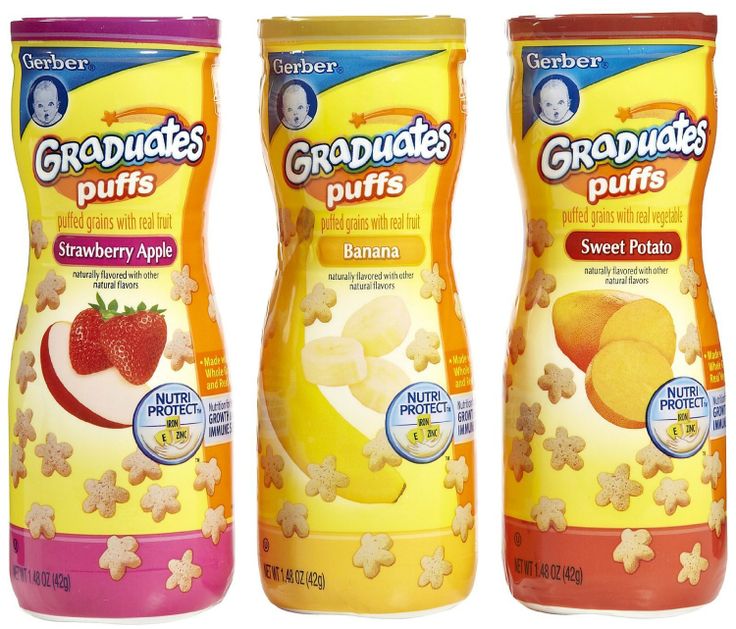 nine0005
nine0005
Pesticides and bananas
Bananas are usually labeled with manufacturer's name. In addition, bananas often have stickers with numbers on them, which can say a lot about the way bananas are grown. So, codes 4011 and 94011 indicate that these fruits are organic, without chemistry. This should be considered when buying bananas for a child. If the fruit has a sticker of five numbers that starts with the number "8", then it is genetically modified bananas. And if the beginning of the code is the number "3" or "4", then the plant was fertilized with chemical reagents and pesticides. nine0005
A shipment of bananas is treated with benzimedazole before being sent to its destination. This substance has a dual effect: it does not allow fungal infections to multiply in bananas and does not allow the fruits to ripen ahead of time.
To ripen bananas that are picked while still green and not ripe, they are treated with the so-called banana gas. Banana gas components are high purity ethylene and nitrogen. Temperature and gas push the fruits to ripen. This gas is harmless and similar to the substance that is released during the natural ripening of a banana. nine0005
Temperature and gas push the fruits to ripen. This gas is harmless and similar to the substance that is released during the natural ripening of a banana. nine0005
Freezing bananas
I don't know why it is necessary to freeze bananas. They can be purchased at any time in any store at the best price. Although it is possible to freeze a banana, and when the child grows up, then it is necessary. To make natural popsicles, you need a frozen banana cut into small pieces.
It is best to freeze a banana cut into pieces without peel. When defrosted, it may darken slightly and have a runny consistency. You can store a frozen banana for no more than 3 months. Before freezing, you need to decide what the frozen fruit will be used for. If for baking, then it is better to peel and freeze the banana whole, if for ice cream, then peel and cut the banana into small pieces, then freeze, so it will be easier to whip it with a blender. nine0005
Banana puree darkens when exposed to air for a long time, so for freezing it is necessary to add a little lemon juice to it (if lemon is included in the child's diet). You can freeze in ice molds. You can store banana puree for no more than 1 month. You can use banana puree mixed with other fresh fruits.
You can freeze in ice molds. You can store banana puree for no more than 1 month. You can use banana puree mixed with other fresh fruits.
Dried bananas
Dried bananas and banana chips are available at the store. Dried bananas are a dried whole product in a special way. Banana chips are a product cut into round pieces that have been dried in a fast way. Dried bananas are high in calories and high in sugar. This must be taken into account when choosing this dried fruit. Dried bananas and banana chips are great substitutes for candy, but should be given in limited amounts, especially to children under 3 years of age. nine0005
Canning bananas
In general, bananas are preserved, although I don't see the point, since bananas are available all year round in stores. But from a banana you can make jam, jam, marmalade, candied fruit, marshmallow, banana puree (sugar is used in the recipe).
Contraindications
1) Babies under three years of age should be given bananas with caution, as it is difficult for the digestive system to absorb such a product, and there is also a risk of developing allergies.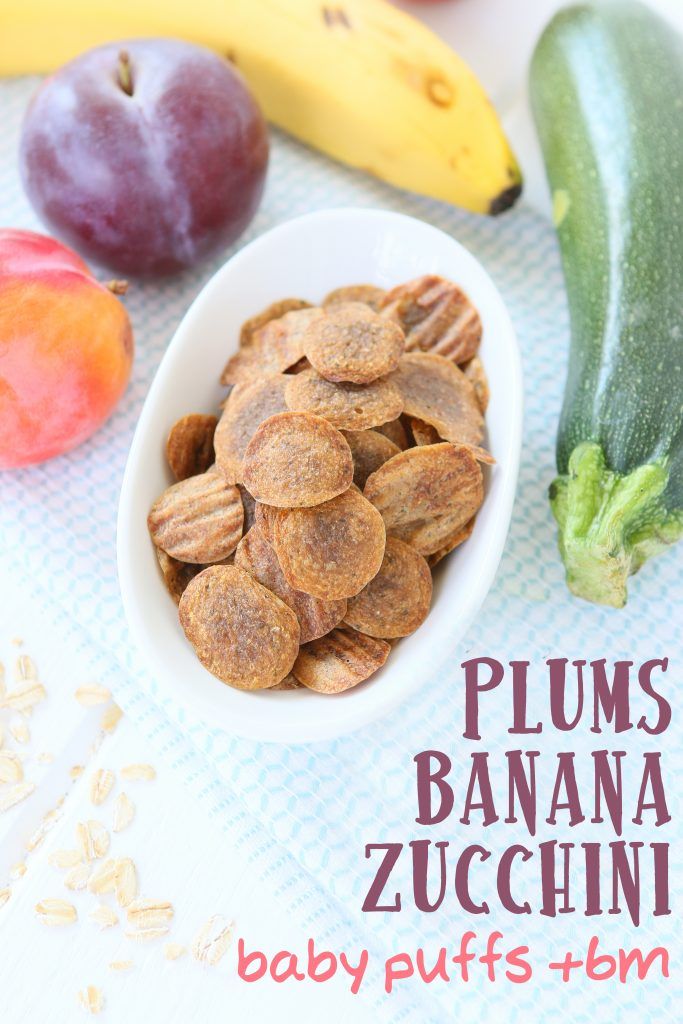
2) When eating a large amount of bananas, an excess of vitamin K is possible. This vitamin provokes kernicterus and hemolytic anemia. nine0005
3) With varicose veins, thrombophlebitis, people who have had a heart attack or stroke, bananas are contraindicated. They can lead to blood clots in people who have thick blood.
4) Since ripe bananas contain a large amount of sugar, this product is not recommended for people suffering from diabetes.
5) Bananas are not recommended for bile flow problems, as they are slowly digested.
6) Bananas can also cause gas and flatulence due to slow digestion. nine0005
How to cook bananas
Bananas in baby food are consumed fresh, only at the beginning of complementary foods it is given in cooked form before the product is introduced into the child's diet.
Fresh: Banana must be peeled, cut into pieces, beaten with a blender, served on the child's table.
Cooking: Peel the banana, cut into pieces, boil the banana in water or steam for 3-5 minutes, beat with a blender or mash with a fork, invite the child to try. nine0005
nine0005
Baking: Put the peeled banana on a baking sheet and bake at 200 C for 20 minutes, beat with a blender, serve.
Proposed way of consuming bananas in baby food
Bananas are offered fresh, at first the baby eats banana puree, later pieces of bananas, by 12 months the baby can be given a whole banana, which he will eat with pleasure.
A banana is an ideal snack for a child, which can be done on the street, in line, on a journey when it is impossible to eat fully. nine0005
The fruit is also very good for breakfast, as it provides a natural boost of energy. You can also add a banana to smoothies, cocktails, sweets, ice cream, pastries, sweet cereals, berry and fruit salad. This fruit makes an interesting sauce for meat and fish dishes.
Finger food
Banana is great for finger food. It is soft and turns into a porridge in the mouth, which is easy to swallow. At first, you can give small pieces of a ripe banana, as the child grows older, you can offer larger pieces. As a result, by 12 months, the child will eat a whole ripe banana. nine0005
As a result, by 12 months, the child will eat a whole ripe banana. nine0005
I draw your attention once again, we offer the child a soft ripe banana, as he can choke on an unripe product. And also when introducing a banana as a finger food into the diet, adults should always be present and help the baby if he does choke.
Many parents think how to cut a banana into long, thin pieces that are as thick as a finger and fit easily into a child's hand. This is easy to do. We remove the peel to half the banana, remove the black circle from the top of the banana, put our finger in the center and press, as a result, the banana is divided into three equal parts, we get three banana sticks equal in thickness to an adult's finger. nine0005
Keep in mind that the banana is a soft product, so the first time finger food will be in the banana. Do not worry, the baby will learn to eat it carefully, but a little later.
Banana drink
Pure banana juice is not made. Banana is mostly used in milkshakes or smoothies as banana puree combined with milk or water.
Banana is mostly used in milkshakes or smoothies as banana puree combined with milk or water.
Banana prepackaged baby food
Prepackaged baby food manufacturers offer many banana products for babies. Basically, pure banana puree is rarely sold, as lemon juice, vitamin C, water, cream, and milk are added to the banana. nine0005
Therefore, when buying baby puree, it is necessary to carefully read the composition, if the child is allergic to dairy products or lemon juice, or if these products have not yet been introduced into the diet, then this ready-made food should not be given. I draw your attention to the fact that in Gerber, where it says “Only Banana” on the jars, there is citric acid, vitamin C and water.
Citric acid or lemon juice is needed to keep the banana puree from darkening. However, lemon belongs to citrus fruits, so it is introduced into the diet after 12 months. An allergic reaction is possible to it. nine0003
Pure banana juice is also not found, mainly this banana pulp is diluted with water and seasoned with lemon juice or acid.
As a standard for all manufacturers of baby food, there are products such as banana puree, banana nectar and apple and banana puree. As it turned out, such a combination is offered by such well-known manufacturers as Frutonyanya, Babushkino Lukoshko, Spelenok, Agusha, Umnitsa, Agu-Agu, Gerber, Heinz, Hipp, Semper, as well as little-known ones - Toptyzhka, Bibikol, Belakt, Little happiness, etc. nine0005
Manufacturers also tried and offer many interesting mixes of children's mashed potatoes, cereals, cookies, dairy products and juices:
- Puree apple-Banan-Brothers Frutonia
- Banan-Banan-Banan-club 9000 Frutonyanya
- purea Banana-Carrot Frutonyanya
- Juice Apple-Banana-Cherry-Raspberry Frutonyanya
- Milkshake Apple-Banana-Pear with cookies Frutonyanya Kasha-Apple-Ban 002 Frutonyanya
- Apple-Banan-Torrog Babushkino Lukoshko, AGU-AGU
- Purean Banana Malina with cream Rolls
- Puree Apple-Banan-Percik with Cream Rolls-Banan.
 gerber
gerber - Banana-Lesnaya berries gerber
- Puree Apple-Banan-Banan-Banan-Abrikos Gerber
- Puree Apple-Banan-Persik-Persik-Persheko 9000 Heinz
- PURA-BANCA0005
Chocolate pear tiramisu
Instant coffee can be used instead of ground coffee.
Yulia Vysotskaya
Recipe from Yulia Vysotskaya
Coconut meringue with truffle mousse
In homemade dishes, I never strive only for geometrical, for example, perfect surfaces, in this dessert to be about the same height. Chocolate can be
Julia Vysotskaya
Advertising
Video recipes on the topic
Recipe from Yulia Vysotskaya
Plum cake
There are no secrets here, it always turns out for everyone.
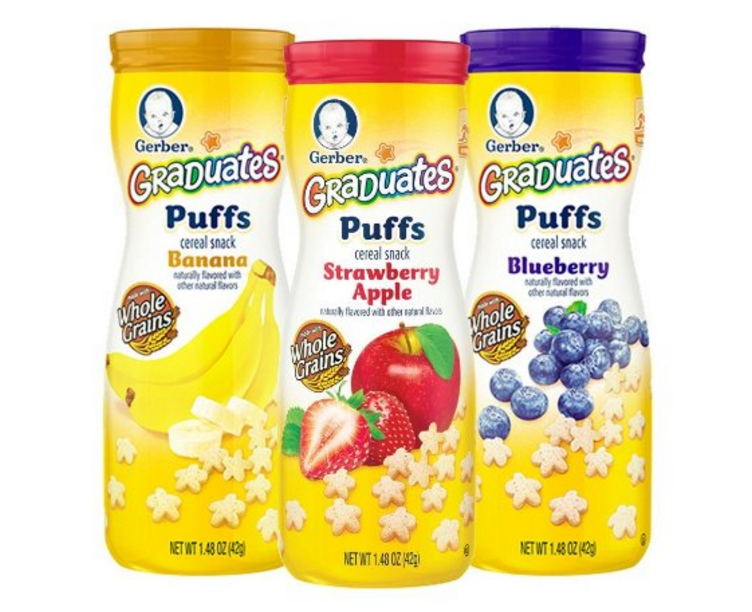 However, there is one subtlety: the sweeter the plums, the better. Add sugar to your taste - you may need less if the plums are sweet.
However, there is one subtlety: the sweeter the plums, the better. Add sugar to your taste - you may need less if the plums are sweet. Yulia Vysotskaya
Recipe from Yulia Vysotskaya
Chocolate parfait
Parfait is not semifreddo or chocolate mousse, but rather a frozen cake with a completely unusual texture. Such desserts, of course, are only for chocolatelaids and coffee machines, which I am
Julia Vysotskaya
AdvertisingAnastasia Trofimenko
9000 9000 9000 9000 5000 9000 9000 5000 9000 5000 9000 5000 for:
5 persons
DESCRIPTION
Simple, healthy and very tasty cake cream!
It is universal, suitable for cakes and pastries.






